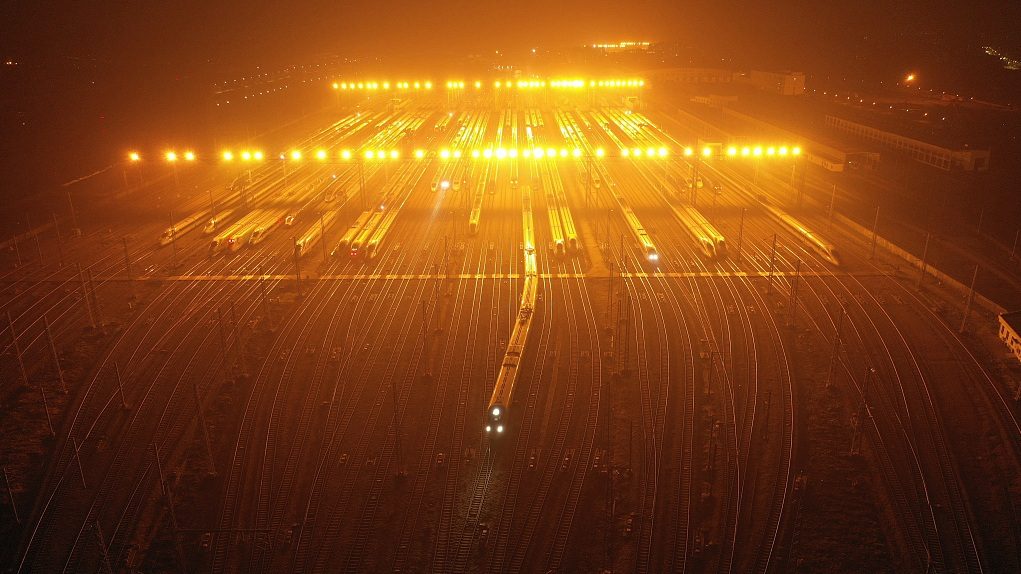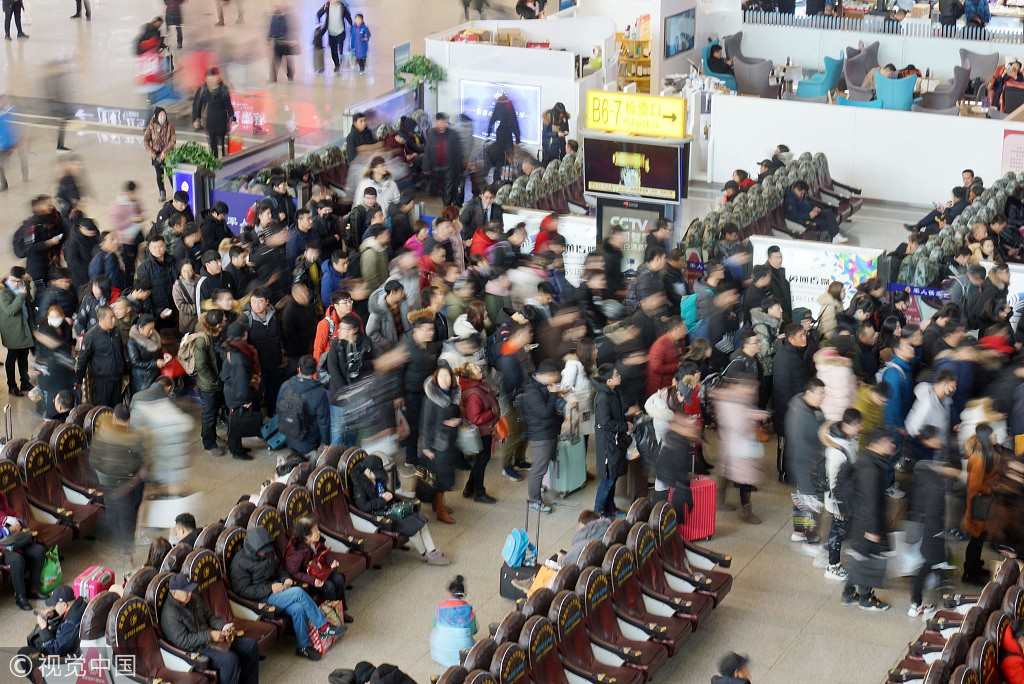
Culture China
22:30, 20-Jan-2019
China gears up for Spring Festival travel rush
Updated
12:18, 21-Jan-2019
CGTN
02:09

China's transport authorities are busy getting ready for the Spring Festival travel rush starting Monday, with three billion trips expected to be made this year.
From January 21 to March 1, total trips are expected to rise 0.6 percent compared with the travel rush last year, with an 8.3-percent increase in railway trips and 12-percent hike in air trips.
To deal with the air traffic pressure, the Civil Aviation Administration of China (CAAC) plans to expand domestic flights in 10 large airports including Shanghai Pudong International Airport, according to Dong Zhiyi, deputy head of the CAAC.

Travelers line up at Shenyang Railway Station in Shenyang city, Liaoning Province. /VCG Photo
Travelers line up at Shenyang Railway Station in Shenyang city, Liaoning Province. /VCG Photo
At the same time, the aviation authority plans to schedule 532,000 flights during the travel rush, an increase of 10 percent year on year.
To enhance railway transportation capability, a total of 4,787 and 4,860 two-way train services will be scheduled daily before and after the festival respectively, up 5.4 percent and 5.2 percent compared with the same period last year, according to Lian Weiliang, deputy head of the National Development and Reform Commission.

High-speed trains in waiting before the Spring Festival travel rush starts in Guangzhou city, Guangdong Province. /VCG Photo
High-speed trains in waiting before the Spring Festival travel rush starts in Guangzhou city, Guangdong Province. /VCG Photo
To increase efficiency, some railway stations will pioneer "ticketless travel." Instead of buying tickets online and collecting them at the stations, travelers can pass ticket checks by scanning QR codes using their phones and pay afterwards.
Hundreds of millions of Chinese return to their hometowns every year during the Chinese Lunar New Year to get together with their families.
The Year of the Pig on the Chinese lunar calendar will begin on February 5.
Source(s): Xinhua News Agency

SITEMAP
Copyright © 2018 CGTN. Beijing ICP prepared NO.16065310-3
Copyright © 2018 CGTN. Beijing ICP prepared NO.16065310-3